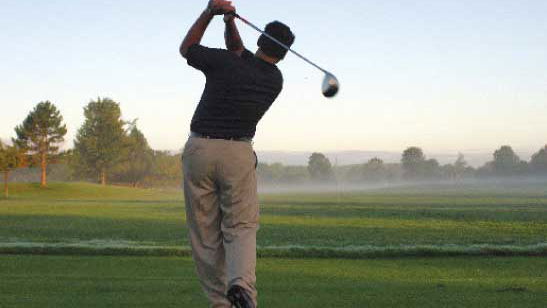Instruction: Shaping your shots
All accomplished golfers need to be able to fade and draw their shots. It allows you to navigate doglegs, play miraculous recovery shots or just impress your friends. Here, we'll show you how.

Have you ever stood on a tee of a difficult hole and feared the worst from your game? Do you think that you just have to find that fairway otherwise your entire world will just cave in around you?
There must be a hole on your local course that you dread missing a fairway. Perhaps there is a water hazard on the right, perhaps an abundance of heather or gorse on the left, or the entire hole is tree-lined with lollipop pines and you cannot for the life of you think how you are going to play that hole well every time you step on to the tee.
Well, here is a cure for you. It might take a couple of visits to the range, but I guarantee that when you master how to shape the ball off the tee, you will find more fairways than ever and score to your full potential.
While many people say that you drive for show and putt for dough…think about that old adage…If you didn’t drive well in the first place to find the fairway, how on earth are you going to putt for any dough whatsoever when your ball is deep in the trees or you have to reload a provisional ball.
Good golf begins with a solid tee game and to help you improve your scoring, learn how to drive the ball consistently. Everyone has a natural shape shot, mine is a gentle fade although it is essential to be able to draw the ball on occasions to get maximum distance and help fight other elements like a left to right wind for example.
Hopefully these tips will help you find more fairways and develop another arrow to your golfing bow.
Fading the ball:
Without changing anything in your actual swing, all you have to do to make the ball move left to right, just like Monty, is to open your stance.
By that I mean align your feet, knees and shoulders slightly to the left of your intended target, while keeping the clubhead facing the target. It is very important not to fight the natural swing path the club will then take around your body and by putting the ball ever so slightly further forward in your stance will help you stay behind the ball and hit it with a glancing blow.
By opening your shoulders, your swing path into the ball will change, it will now come in to the ball from the outside of the line and at impact, you will cut across the ball, putting…wait for the technical term… cut spin…or left to right spin on the ball.
Colin Montgomerie aims down the left of every fairway and cuts the ball back into the centre. It work for him every time and he has won seven Volvo Order of Merit titles with a “fade”.
If you have problems in pulling the ball straight left every time you try and fade it, try weakening the right hand, put it more on top of the grip. That way it helps keep the clubface open at impact.
Playing a draw:
To help you draw the ball, imparting right to left spin on it is a bit trickier. However, if you can master this shot, not only will it help with accuracy and fighting left to right winds, it will also add quite a few yards to your driving.
Putting right to left spin on the ball is akin to adding topspin, or running side to coin a snooker term. If you can do this consistently, you will find you become a lot longer with your driver.
Set up to the ball in your normal way and while keeping the clubface pointed at your intended target, close your stance. Try and get your feet, knees and shoulders all pointing slightly to the right of your target line.
Now, the only extra tips you need is to firstly grip a little stronger by getting the right hand underneath the shaft more and while keeping your normal swing, just watch the ball as you are hitting it…hit past the head.
By doing that, it encourages the clubface to turn over at impact imparting draw spin to the ball.
Like the fade, if you have problems hitting it straight right instead of straight left every time, try altering the ball position, move it further forward in the swing to allow the club face time to snap shut at impact, giving that valuable draw flight.
It is the most powerful shot in golf and one that at times is difficult to control. But if you practice it often enough on the range, you will soon be taking it to the course and using it to good effect.
I didn’t say it would be easy, but give it a go next time you are on the range.
If you can develop these shots to a fairly reliable degree, you will have the added advantage of playing a safe shot on any difficult holes you might come across.
When you are competent at both of these shots, you can then choose what shot to play on any hole. You will then find more fairways and impress your mates with your sheer talent!
Good luck!
Article first published February 2001, updated April 2013.

